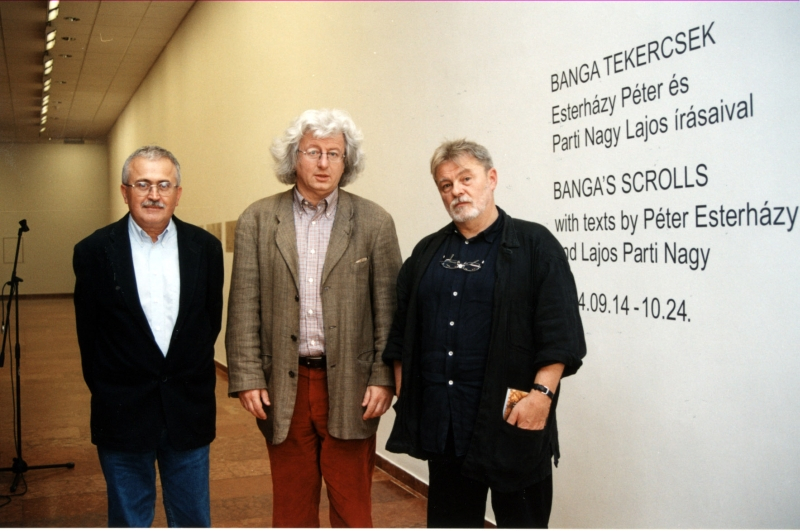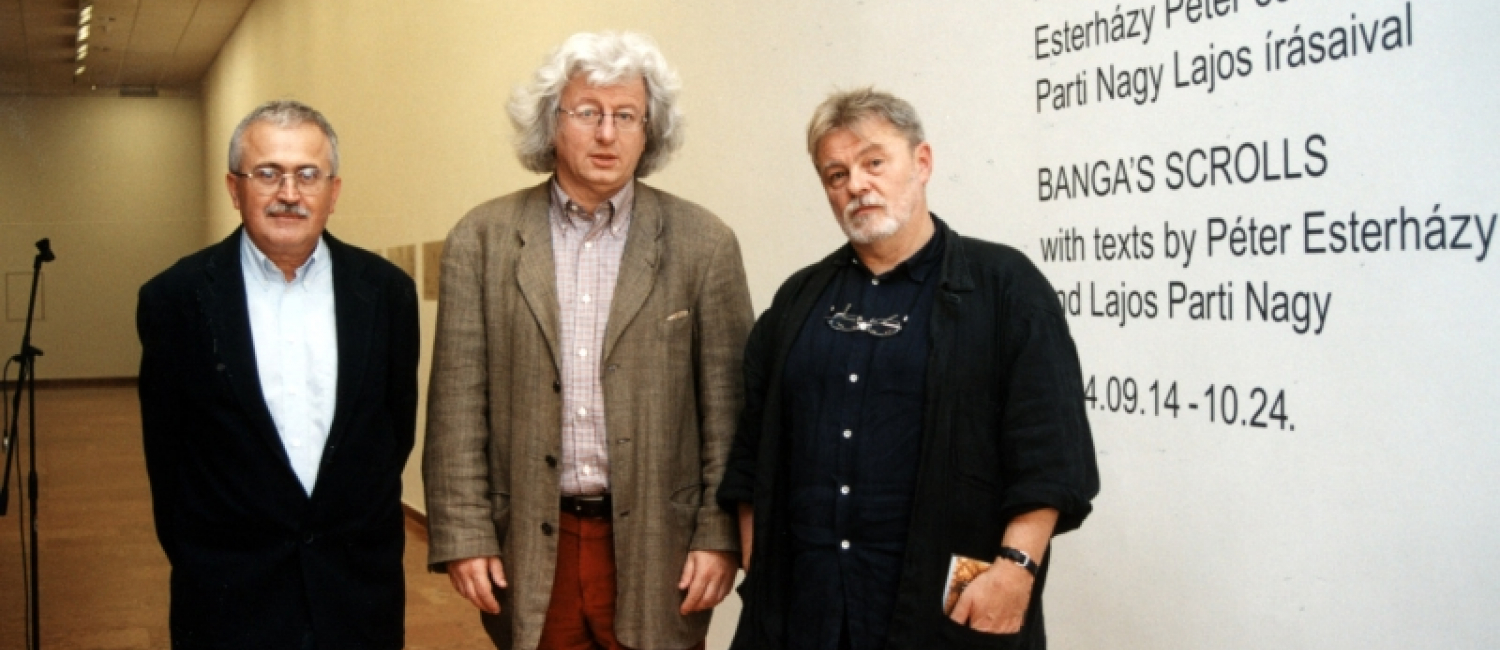Banga Scrolls
with texts by Péter Esterházy
and Lajos Parti Nagy
14 September – 24 October 2004
Ferenc Banga, one of the prominent figures in the middle generation of Hungarian graphic artists, has been illustrating books since 1975. Throughout his artistic career, his drawings have fundamentally retained their angular character, elliptical style in a grotesque yet emotional world.
“When Ferenc Banga discovered [scrollbooks] a decade ago, not only did he enrich our book culture with a new form, but he reminded us of the deep kinship existing between writing and image. Of course, he merely re-introduced us to this relationship, since at once we knew that the two sprang from one and the same root — we simply forgot about it, just as Winniethe-Pooh would say.” (Márta Kovalovszky) The relationship between text and illustration in his books is just as natural and harmonic as in medieval codices or in the travel chronicles made by the early discoverers of modern history. Besides illustrating, or in the original sense of the Latin word, ‘illuminating’, i.e., ‘explaining’ the texts, his drawn images enter into interaction with the texts, to generate a plethora of new meanings. “Lines come together in a sweet harmony, responding one to the other with a challenging air of superiority, just like singing voices do in a duet by Mozart.” (M.K.)
Scroll-form books, originating from ancient oriental cultures, served as models for Ferenc Banga’s first two picture books, which incorporate texts by two Hungarian writers. A Woman by Péter Esterházy, and Tripe, Bajazzo by Lajos Parti Nagy, were actually created with the collaboration of the authors, with the texts having been put to paper by the authors in their own handwriting. In addition to the scrolls that are made to be taken in hand, an oversized version of each was also created, with a length of some nine metres, which were exhibited for the first time in 2002 at Fészek Gallery, Budapest. In addition to these earlier works, also on view is a recent book by Banga, inspired by another text by Lajos Parti Nagy, Fragments from Endre Dump, this time modelled on the form of the Tibetan Book of the Dead. The individual folios of the series of 15 are bound by a ribbon which passes through holes in the middle of each one.
Ferenc Banga, born in 1947 in Újpest, studied at a free art school under György Zilahy and Tamás Ervin. Between 1968 and 1972 worked as a restorer at the Museum of Ethnography, Budapest; between 1972 and 1977 led evening drawing courses at Újpest; between 1986 and 1989 was the arts director of the Újpest Gallery, Budapest. He has participated in domestic and international exhibitions since 1970 and his works can be found in Hungarian and international public and private collections.

Related content
Finissage of the exhibition, BANGA SCROLLS 20. October, 2004, 19:00–21:00
Contributors: Péter Eszterházy and Lajos Parti Nagy
